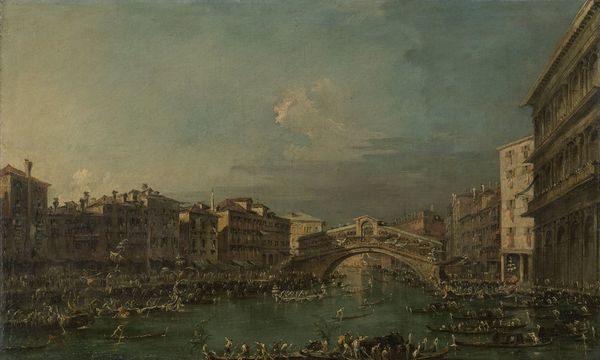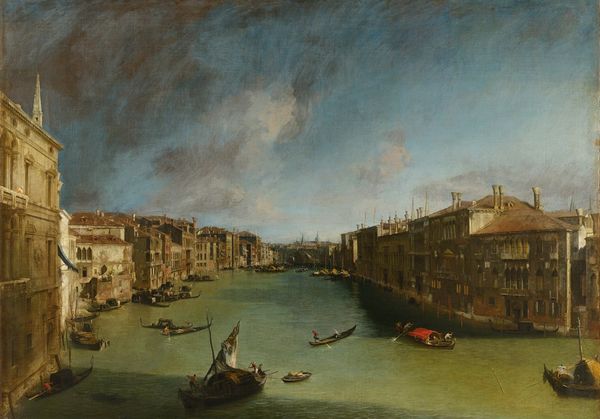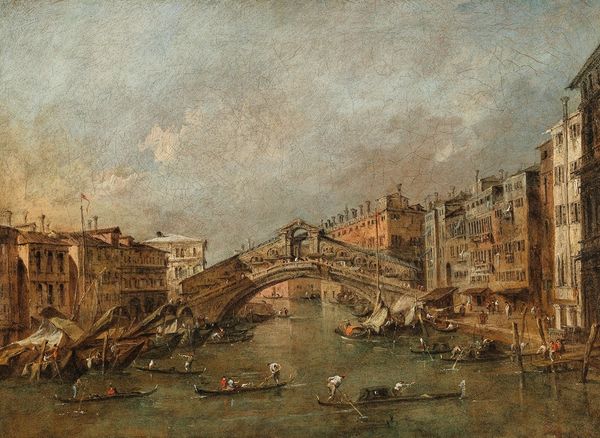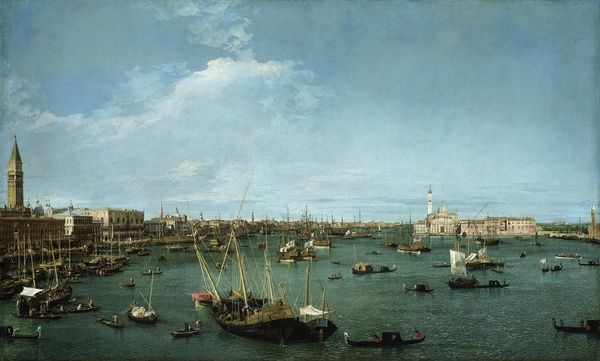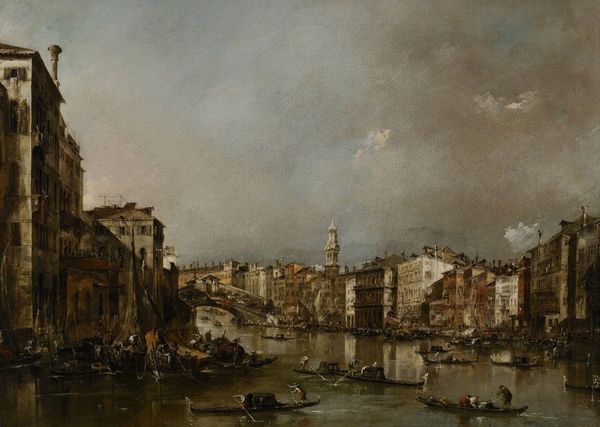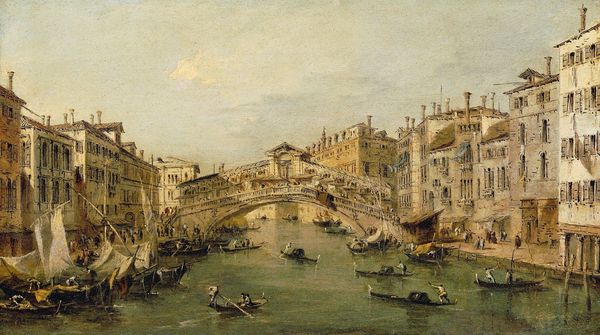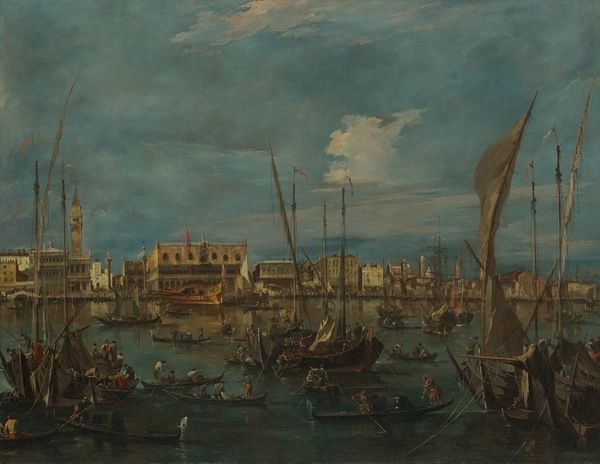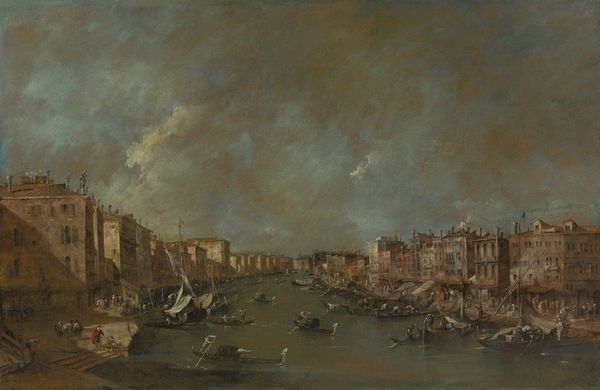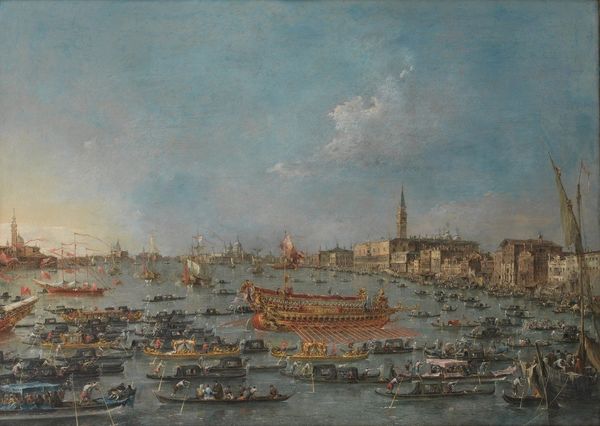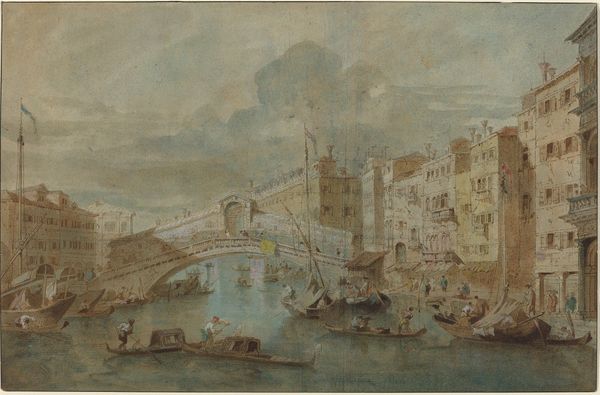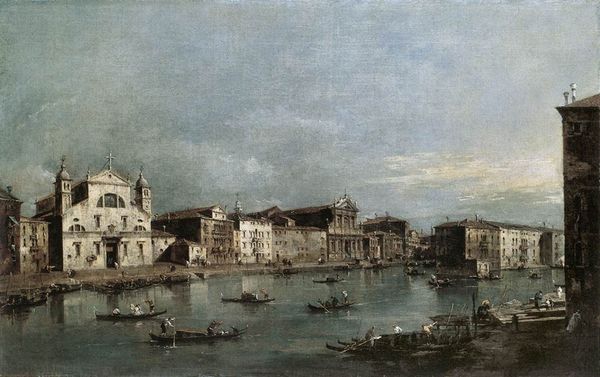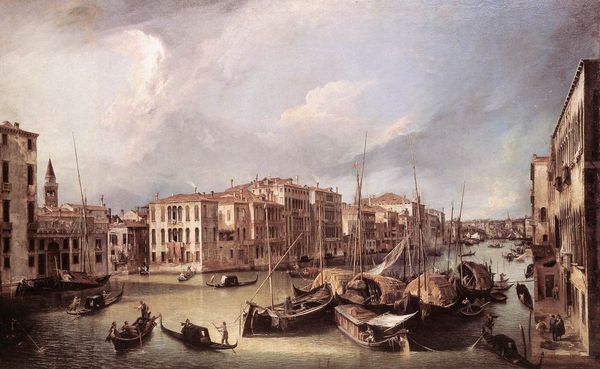
Copyright: Public Domain: Artvee
Editor: So, here we have Francesco Guardi's oil painting, "Grand Canal with the Rialto Bridge, Venice," from around 1780. The scene is busy, bustling even, but something about the light gives it a feeling of dreamy timelessness. What do you see when you look at it? Curator: I see Venice as a carefully constructed performance for the gaze of wealthy tourists, particularly the British Grand Tourists who flocked there in the 18th century. This painting becomes a kind of souvenir, reinforcing the romantic vision they sought. Notice how the Rialto Bridge, a key architectural achievement, is framed—a carefully staged backdrop. Editor: So, less about capturing reality and more about selling an image? Curator: Precisely! Guardi, unlike Canaletto, often prioritizes atmosphere and loose brushwork over meticulous detail. Consider the socio-political climate; Venice was declining as a maritime power, increasingly reliant on tourism. This painting caters directly to that new economy, idealizing the city rather than documenting its realities. How do you see the gondolas fitting into that narrative? Editor: Ah, the gondolas become part of the Venetian branding, then - less practical transport and more… iconic props? Curator: Absolutely. The 'props' for this performance and marketing tool show Venice, not for Venetians, but for outsiders and, crucially, their wallets. It's a calculated representation shaping the ongoing narrative. I find that dynamic very telling. Editor: That's a fascinating perspective. I never thought about how art could be part of that economic machine. Curator: It challenges our notion of landscape painting, doesn't it? We are forced to consider how political context defines representation.
Comments
No comments
Be the first to comment and join the conversation on the ultimate creative platform.
